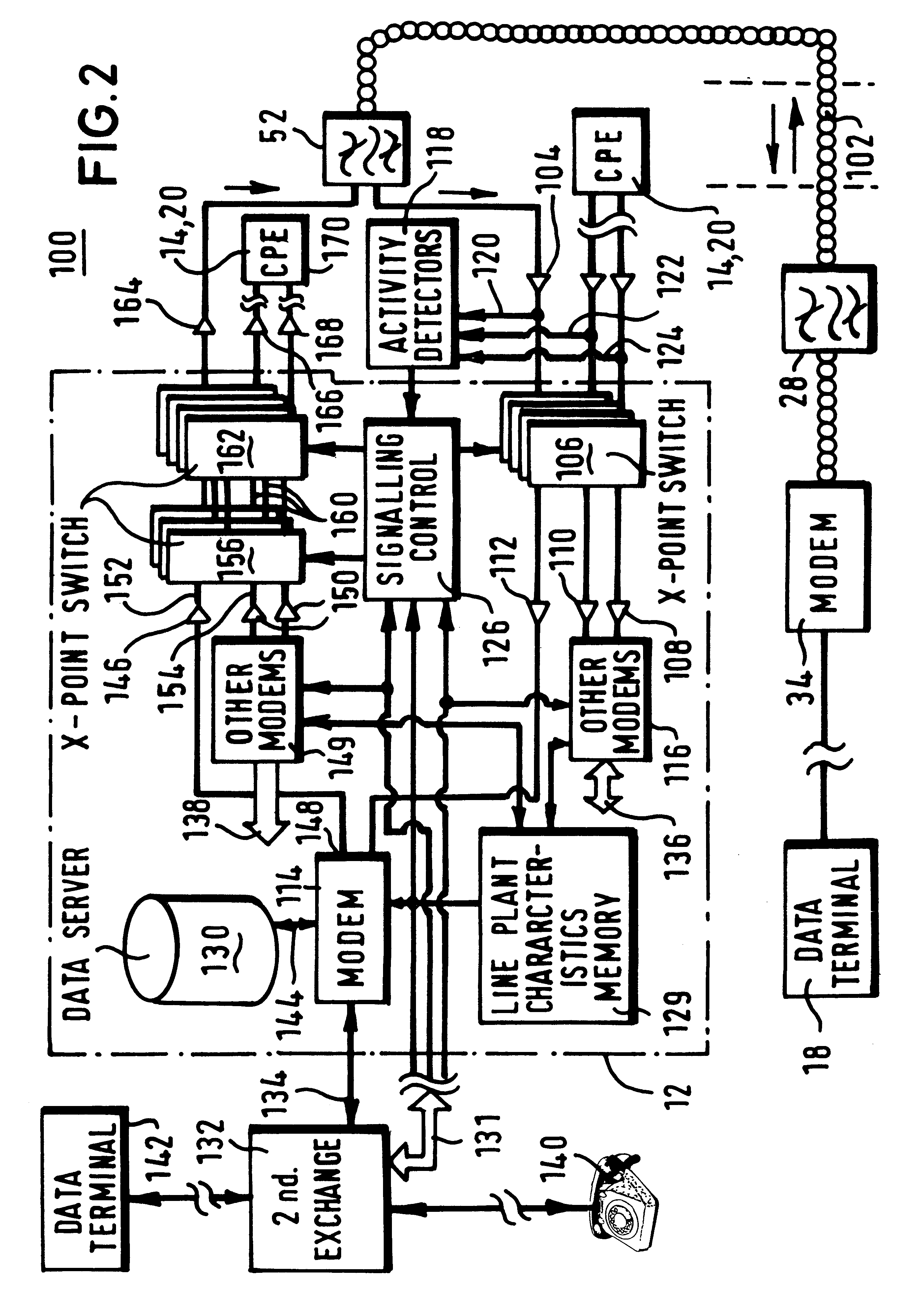Communication system architecture, infrastructure exchange and method of operation
- Summary
- Abstract
- Description
- Claims
- Application Information
AI Technical Summary
Benefits of technology
Problems solved by technology
Method used
Image
Examples
Embodiment Construction
Before discussing a preferred embodiment of the present invention in detail, a comprehensive discussion of a prior art, wire-line communication network 10 (of FIG. 1) will be presented. The wire-line communication network 10 comprises an exchange 12 that is coupled, via twisted pairs 22-24, to a plurality of subscriber terminals 14-20, such as telephones and computers (generically termed "customer premises equipment"). More particularly, the customer premises equipment will be coupled to the twisted pairs 22-24 through filters 26-28 that provide frequency separation and isolation of voice and data communications, for example. More importantly, the filters 26-28 allow spare spectrum (i.e. a spare frequency channel) on a communication resource to be utilised by providing a separation of broadband signalling from conventionally encoded voice signals. with the broadband transmissions supported by techniques such as asynchronous digital subscriber line signalling (ADSL), high speed digit...
PUM
 Login to View More
Login to View More Abstract
Description
Claims
Application Information
 Login to View More
Login to View More - R&D
- Intellectual Property
- Life Sciences
- Materials
- Tech Scout
- Unparalleled Data Quality
- Higher Quality Content
- 60% Fewer Hallucinations
Browse by: Latest US Patents, China's latest patents, Technical Efficacy Thesaurus, Application Domain, Technology Topic, Popular Technical Reports.
© 2025 PatSnap. All rights reserved.Legal|Privacy policy|Modern Slavery Act Transparency Statement|Sitemap|About US| Contact US: help@patsnap.com



